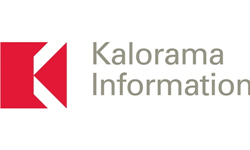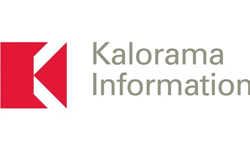
Globally, cell and gene therapy products are transforming the treatment of cancers and genetic diseases.
ARLINGTON, Va. (PRWEB)
October 07, 2021
Cell and gene therapies are trending as groundbreaking treatments with the potential to actually cure disease rather than simply manage symptoms. As a result, through 2030, the global market for cell and gene therapy is forecast to expand strongly to $29,960 million, up from $3,866 million in 2020, according to a 2021 report by Kalorama Information and editors at the medical research firm’s new sister publication, Cell and Gene Therapy Business Outlook.
“Globally, cell and gene therapy products are transforming the treatment of cancers and genetic diseases,” said Bruce Carlson, publisher for Kalorama Information. “Additionally, cell and gene therapies are expanding into other areas of medicine including autoimmune diseases, cardiovascular diseases, musculoskeletal disease, dermatological diseases and many others.”
Oncology a Key Cell and Gene Therapy Segment
Among the expanding areas of focus for cell and gene therapies, oncology remains one of the most intriguing and notable. Treating cancer is difficult and not just because there are over 100 different types of cancer (including lung, breast, brain, blood, prostate and colon cancer), but because it is not a single disease and because all the cells in a single tumor do not behave in the same way. Although most cancers are thought to be derived from a single abnormal cell, by the time a tumor reaches a clinically detectable size, the cancer may contain a diverse population of cells.
Opportunities Amidst Challenges
Despite the challenges, there are opportunities. Cell therapy has been used for years for blood transfusions and hematopoietic stem cell transplants. Advancements in technology have created new options for treatment.
The initial development of CAR-T cell therapies focused on treatment for ALL (acute lymphoblastic leukemia), NHL (non-Hodgkin lymphomas), multiple myeloma, and GBM (glioblastoma multiforme). Now in development are products for solid tumors such as pancreatic cancer, ovarian cancer and colorectal cancer. The FDA has even approved three CAR-T cell therapies, including Kymriah, Yescarta, and Tecartus.
Growth Factors in 2021
Kalorama Information estimates the global market for cell and gene therapy for oncology reached $1,582 million in 2020 and is expected to climb to $2,744 million in 2021 as the segment exhibits tremendous growth momentum that is expected to continue through 2030. Several factors contributed to strong growth including:
-
Strong increases in the CAR-T therapy market, increasing from just $16 million in 2017 to $1,081 million in 2020 and projected to increase to $7,391 in 2025 and ultimately reach $17,490 million by 2030. - Blood cancers are the leading driver in the segment, representing 68% of total sales. This is expected to be the primary segment through the forecast, representing 80% of sales by 2025 and 80% in 2030.
- The United States and Europe are the largest markets due to overall product approvals and cost associated with the therapies. The US market represented nearly 77%, while Europe represented 19% in 2020.
- Gilead and Novartis combined represent 68% of the market for cell and gene therapy in oncology.
- Industry refocuses on oncology cell and gene therapies in a post-pandemic arena, returning to pre-pandemic growth.
Growth Factors Beyond 2021
Pricing Trends
In oncology cell and more particularly, gene therapy, the cost of therapies is exceptionally high. From development to manufacturing processes, these therapies require more complex evaluations to determine eligibility for payment. It is anticipated that as more products become available, prices will fall somewhat but it is an expensive process for all participants.
Expected Market Penetration
It is anticipated that CAR-T oncology products will continue to produce the lion share of revenues for the oncology cell and gene therapy market. Compound annual growth rate for CAR-T is forecast to be 43% for 2020-2025. Market penetration was slowed in 2020 due to the COVID-19 virus but is expected to gain steadily in 2021-2025. The CAR-T market will overshadow the cell immunotherapy, gene therapy and other cell therapy markets.
More information about Cell and Gene Therapy Business Outlook can be found here: https://kaloramainformation.com/cell-and-gene-therapy-business-outlook/
About Kalorama Information:
Kalorama Information, part of Science and Medicine Group, is the leading publisher of market research in healthcare areas, including in vitro diagnostics (IVD), biotechnology, medical devices, and pharmaceuticals. Science and Medicine Group supports companies seeking to commercialize the rapidly changing marketplace at the intersection of science, medicine, and technology. Comprised of industry-leading brands, Science and Medicine Group serves analytical instrument, life science, imaging, and clinical diagnostic companies by helping them create strategies and products to win markets and provide platforms to digitally engage their markets through a variety of innovative solutions. Kalorama Information produces 30 reports a year. The firm offers a Knowledge Center, which provides access to all published reports.
Share article on social media or email:

